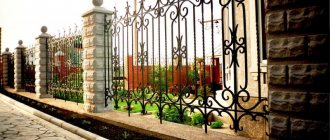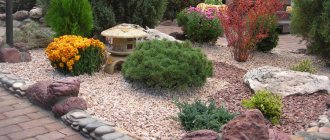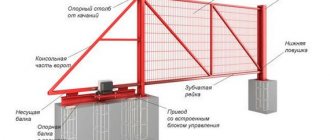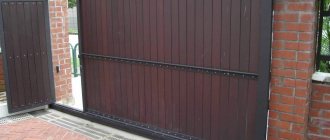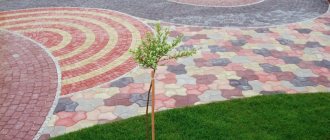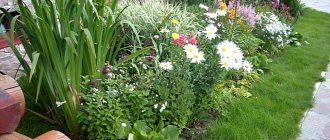The value of the front garden in front of the house is priceless from the point of view of the landscape composition of the summer cottage. Since, like a gatekeeper, he is the first to greet visitors, the impression of the home as a whole will depend on its design.
Therefore, dacha owners definitely need to know how to properly equip it. This is what we will talk about in this article.
Functions of the house front garden
A well-groomed and comfortably decorated front garden is a decisive step towards significantly distinguishing your house and plot from a number of neighboring properties. However, in addition to aesthetic value, such a solution also carries a lot of useful functions. Eg:
- A front garden is a convenient and cozy option for occupying the space between the gate or the beginning of the site and the house. It will organically take up space and will not leave unnecessary emptiness;
- the front garden can act as a parking lot - not the usual empty and concrete one, but decorated with flowers and other decorative elements;
- plants and flowers in the front garden can be a good protection for the owners from the curious glances of named guests, as well as envious neighbors. In any case, you can arrange the front garden in such a way that, in addition to beauty, it also provides protection for personal boundaries and private pastime;
- Also, a front garden can become a free platform for creativity: why take courses in landscape design if you can do it right at home?
It is quite fair that without the proper experience, the question “how to create a beautiful front garden” can cause fear and self-doubt. However, do not be discouraged: creating a front garden is not difficult, even if you have only held a shovel in your hands once. It's never too late to learn something new!
Setting up a rock garden in a small area
When choosing a location for an alpine slide, you must first take into account the most advantageous angle. In addition, if you want to spend free time near the rock garden, you will need to arrange paths, as well as an area with space for a table and a fireplace.
Construction of a rock garden begins with the selection of territory and its preparation. Its construction is not a pile of stones, but, on the contrary, is a high-quality imitation of a natural mountain landscape.
One large cobblestone or several smaller stones is a symbol of a rock garden. There is no need to lay stones at a great distance from each other, otherwise the slide will look lifeless and dull, regardless of the number of plants. Low-maintenance shrubs and low-growing perennial plants are a priority when creating rock gardens.
Future project planning
Before you start implementing the actual material part of the plan, you need to clearly think through the points related to the positioning and functioning of your future front garden:
- dimensions - the breadth of scale of the compositions you have planned will depend on them;
- sunny or shady side - this affects which types of plants are preferable to plant based on the location of the front garden;
- time - the front garden requires care, because the landscaped area requires a significant degree of attention;
- resources and opportunities - many seeds and plantings of various plants cost a lot of money. Also, it is advisable to plan your budget based on the need for materials for creating fences and paths;
- appearance - it is better to think in advance about how to implement the desired design of the front garden: what elements will be included in it, where is it better to lay the paths, and what will be the color of the front garden - monochromatic or close to Pollock’s work?
Pond near the house
When creating a pond near the house, first choose a place for it. In this case, it is necessary to take into account its compliance with the design of the front garden.
It is necessary to take into account the illumination of the reservoir. Sunlight should not fall on it for more than 5 hours a day, otherwise the water in it will begin to “bloom.” But it is not advisable to choose a place that is too shaded for the pond if plants that need sunlight are planted near it.
It should be taken into account that you should not locate the pond near trees due to frequent cleaning during autumn leaf fall.
A reservoir can be divided into two zones: shallow and deeper. The shallow zone is intended for coastal plants, and the deeper zone is for water lilies and algae. There is no need to make a pond deep if you do not breed fish in it.
Stages of creating a front garden
After drawing up a detailed plan, you need to move on to its implementation. Conventionally, the creation of a standard front garden can be divided into the following stages:
- selection and acquisition of plants, as well as other materials;
- laying and laying out paths;
- installation of fences, lintels and fences;
- planting your preferred plants;
- design of flower beds, clubs and lawns;
- installation and integration of decorative elements into the composition;
- creating a recreation area or parking (if possible and necessary).
The above stages are only approximate and can be supplemented at will, as well as shuffled in any form. First of all, the owners should enjoy how the front garden is made: formalism and stereotypes are not appropriate here.
Lawn
A good solution would be to arrange the local area in the form of a green, well-groomed lawn. Small flower beds are laid out on it or garden decor, benches, and cozy gazebos are placed.
Paths or walking paths are laid in a large local area.
Modern design solutions
Plants are certainly the main decorations of any front garden. However, not only do they create an overall design and aesthetic appeal - it is also achieved with the help of small, but, with proper integration into the composition, very significant decorative units:
- artificial swimming pools;
- gazebos, benches and swings;
- various figurines made of ceramics or metal;
- stands or other elements for climbing plants;
- painted vases or plant pots;
- forged barbecues or firewood.
Functional differences
The area in front of the house can perform: decorative, environmental and productive (economic) functions.
Decorative model. Direct purpose: decoration of the site. For these purposes, various flowers from tall to dwarf sizes, fancy shrubs and climbing plants can be used.
The ecological function is largely performed by trees that are capable of removing dust and harmful gases from the air as much as possible. Poplar and eucalyptus cope well with this function.
Productive, economic function. Makes it possible to receive visual pleasure and harvest from fruit-bearing trees and shrubs.
Popular front garden styles
The main “classic” styles of house front gardens are:
- rustic;
- Japanese;
- Mediterranean or southern;
- Asiatic;
- romantic;
- minimalism;
- modern execution.
With a pond or fountain
Any body of water - be it a pond or a fountain - plays a central role in the front garden, and therefore requires special design. The pond, located in the corner of the site, looks great paired with a waterfall. The classic fountain looks luxurious in the center of the composition, surrounded by rocky paths.
A pond in the front garden makes it visually larger and adds variety to the landscape.
Front garden appearance options
There are two main types of front gardens - open and closed. The first is a territory, the main content of which consists of flower beds, flower beds, small decorative elements and a minimum of tall plants, due to which a good overview of the house and the entire territory is built.
The closed version assumes the presence of tall plants and at least a meter (or higher) fence, consisting of a hedge or various types of fences.
Note!
Perennial flower beds: TOP-200 photos of the best options and new designs. Instructions and diagram for decorating a flowerbed with your own hands
How to prune tomatoes so that they bear fruit - step-by-step instructions for correct pruning of tomatoes for a better harvest
Currants have pale leaves, what to feed them - a review of the most effective techniques from a gardener
Historical reference
Front gardens came to us from Ancient Rome. At first, they were defeated exclusively by retired legionary soldiers.
Initially, the palisade was a light barrier with sentries, broken by troops during a short-term stop.
In case of a surprise attack by the enemy, it gave the soldiers time to raise the alarm. After retirement, the Roman military, out of habit, placed a palisade in front of the house.
According to the regulations, there was some space between him and the place of deployment - that’s where they began to plant different types of ornamental vegetation
From all of the above it follows that the front garden must be located in front of the facade of the house and can be viewed both from it and from the street. Based on this, it is necessary to develop the design of this landscape element.
Fences and paths: selection rules
Paths, as well as front garden fences, must be chosen based on the general style of the created composition. For example, you can’t do without paths even in the smallest area - there is a chance to trample both the lawn and, what’s worse, the plantings themselves. The most popular materials for paths are concrete, paving slabs and stone mixed with brick.
Hedges, which also serve as a border for flower beds and lawn areas, help to divide a large front garden. It is advisable to surround the front garden itself with a fence: this will give it both aesthetic integrity and will help protect the hand-created oasis from unforgiven visitors.
container garden
This is a popular solution for modern times. In this case, you can create a so-called portable garden. For this you will need various flowerpots, pots and flowerpots.
A distinctive feature of such a portable garden is that you can simply exchange one pot of plants for another. Trees in large tubs will look unusual. Chrysanthemums, hydrangeas and coleus are well suited for such a front garden.
Fencing options for the front garden
Today, the following materials or ready-made variations are most often used as a fence for a front garden:
- forged fence;
- stone or concrete front garden;
- wicker fence made of branches;
- metal front garden;
- picket fence for the front garden;
- front garden fence made of corrugated sheets.
Which plants to choose
A bright, beautiful front garden in front of the house is not only beautiful, but also a positive mood.
Therefore, you need to choose flowers that will delight you from early spring to late autumn.
It is best to plant several varieties of perennials that bloom gradually, changing each other. So, in April there are crocuses, hyacinths, daisies, primroses, violas, forget-me-nots, in May - daffodils, in June-July - irises, peonies, lilies. Later, petunias, marigolds, asters will bloom, then chrysanthemums.
To divide the area into several zones, climbing plants are planted: honeysuckle, roses, wisteria. Clematis pleases with large and bright flowers from May to October.
Among the shrubs, barberry, spirea, honeysuckle, and lilac are planted in the front garden. From wood ones, standard ones are chosen so that you can decorate the space around the trunk with a flower bed.
The evergreen decoration of the front garden will be coniferous plants: thuja, spruce, boxwood, juniper, which can be trimmed and given a variety of shapes.
Fruit trees and berry bushes are also very popular in the front garden. Quince, hawthorn, rose hips, and currants look beautiful both in spring and autumn.
There is no need to plant very tall plants in front of the house, since they cover the entire yard with their crowns.
Concrete patios
The durability and versatility of concrete makes it an excellent choice for paving your patio. A concrete patio has many advantages compared to corrugated sheets and other surfaces.
Concrete patio in the courtyard interior
Benefits of concrete patios:
- Highly durable.
- Low operating costs.
- Adaptable to any style.
- Can be poured into any shape.
Decor options:
- Colored concrete. There are several ways to paint concrete, including contrasting, integrating, solid and liquid painting methods (used in combination with embossing), and full staining.
- Embossed Concrete – The surface of your concrete patio can be stamped to create a texture that mimics stone, brick or other materials.
Embossed colored concrete to look like stone
If you already have a patio that is cracked or dirty, you can clean it with concrete. Concrete sanding will make your patio look like new. A reclaimed concrete patio can be painted and stamped.
Another strong trend is to integrate plants into areas where expansion joints would otherwise be located. They help create a more breathable surface and break up the vast structure with greenery. It is not uncommon to use artificial turf in these areas, especially in areas where moisture needs to be maintained.
Grass between seams to maintain moisture
Are concrete patios susceptible to cracking?
Concrete is good for warm climate landscapes that do not experience the extreme freeze-thaw cycles of northern regions that cause uncontrolled cracking. Other factors can also lead to cracking.
This will be of interest to you: Do-it-yourself landscape design for the garden (185+ Photos). Styles You Should Know About
